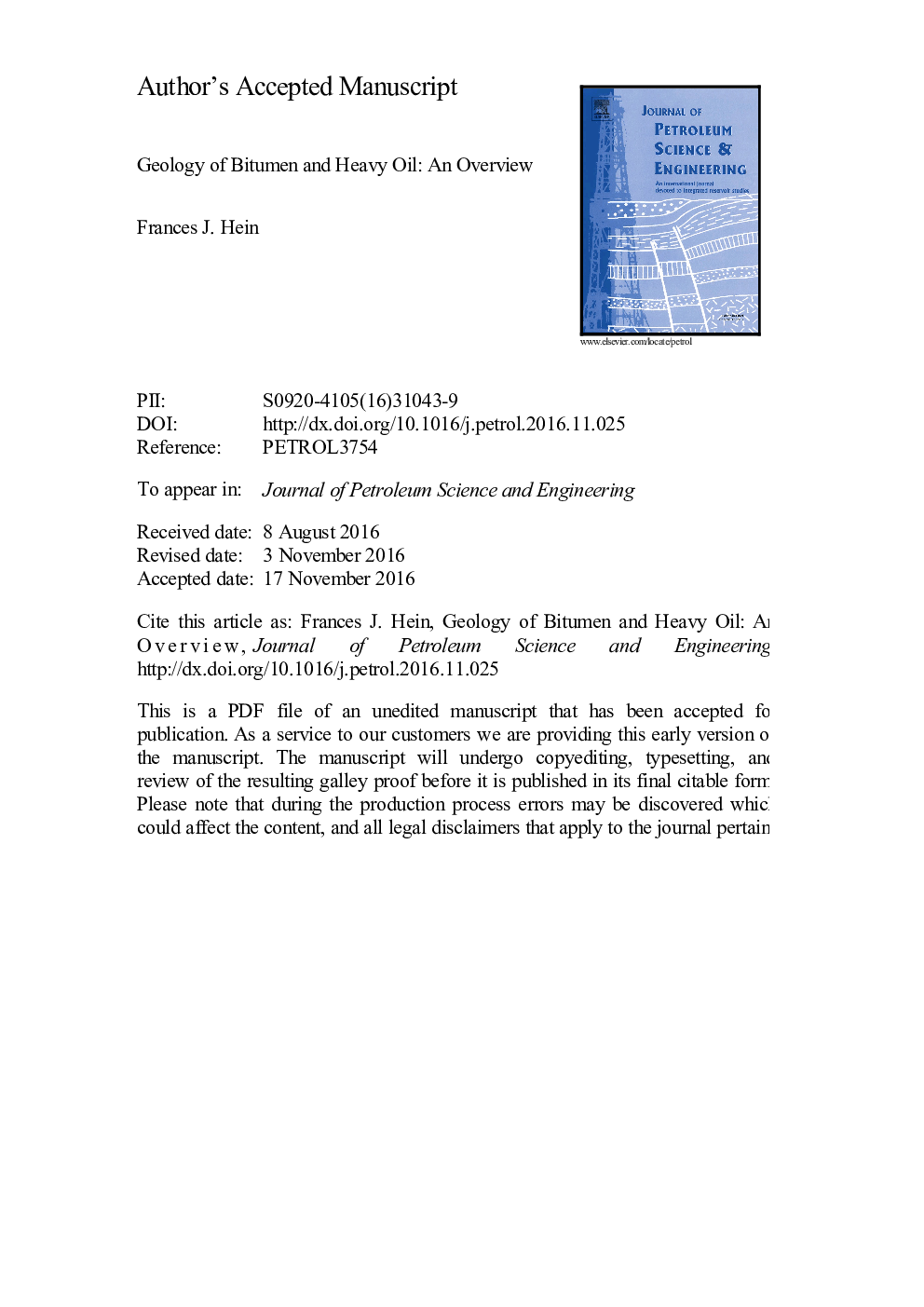| Article ID | Journal | Published Year | Pages | File Type |
|---|---|---|---|---|
| 5484240 | Journal of Petroleum Science and Engineering | 2017 | 34 Pages |
Abstract
Heavy oil and bitumen resources are largely a result of natural degradation of formerly conventional oil accumulations. The natural degradation for most is biologic in origin, with the result that the majority of heavy-oil and bitumen deposits is characteristically in younger rocks (Cretaceous and younger) and at shallow depths (usually <200Â m, up to 2000Â m maximum). At a deposit-scale it is necessary for communication to have been established between the surface and subsurface to facilitate the biologic contamination of the pre-existing light petroleum reservoirs. Communication is through loss of caprock integrity, associated with major erosion (creation of unconformities), faulting, fracturing; and, for carbonate host-rocks, karstification. Two cases are discussed to illustrate these geologic processes: 1) the influence of the sub-Cretaceous unconformity on the Cretaceous oil-sands in the Western Canada Sedimentary Basin; and, 2) the influence of faulting, fracturing and karstification on the Grosmont carbonate-bitumen deposit of northeastern Alberta.
Related Topics
Physical Sciences and Engineering
Earth and Planetary Sciences
Economic Geology
Authors
Frances J. Hein,
